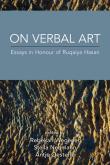' In a particularly revealing interview from 1977, fiction writer Peter Carey was asked how a reader should approach his stories, namely Conversations with Unicorns. Carey replied: Well, I’d hope that the reader would approach them in a relaxed sort of way, hoping to be amused, or diverted. When he’d finished the story I’d hope he’d have found something new to think about. If I’d really done what I wanted to do he’d keep on thinking about the story for weeks, from time to time. If I was successful beyond my wildest dreams I would have given him (or her) something that would alter his (or her) perception of the world. (Ikin 1977, 38). It is remarkable just how accurately Carey’s comment seems to reflect the compelling nature of his short stories. Rubik (2005) has investigated the haunting effect of Carey’s stories in terms of cognitive schemata and Coste (2003) has argued that the inherent ambiguity of Conversations with Unicorns resists generic classification. A number of critical works mention the story (Ahearne 1980, Hassall 1994, Krstovic 2010, Pons 2001, Snodgrass 2010, Turner 1988) but none deal with it in any significant amount of detail, and until now, there has been no attempt to conduct a stylistic reading of this fascinating and under-studied story. Approaching the text from a systemic functional perspective, I investigate the powerful aesthetic quality of the story in terms of prominent linguistic patterning occurring across various linguistic systems.'
Source: Abstract.



